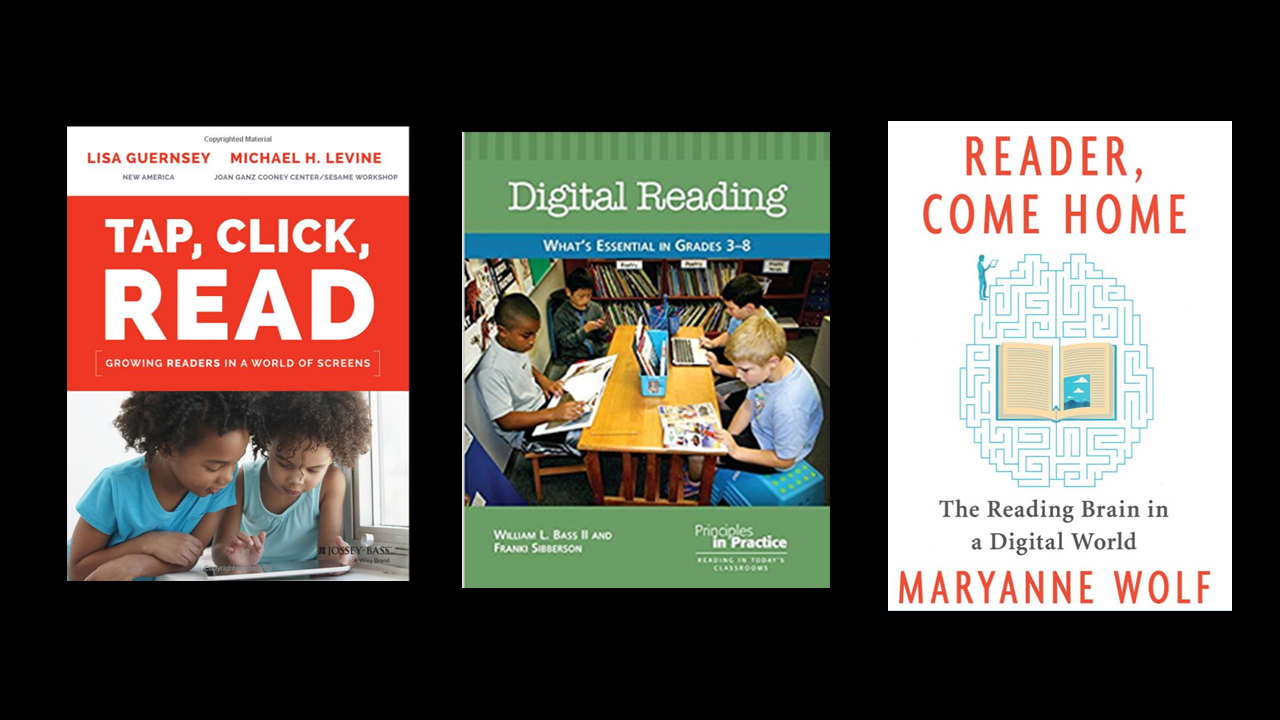Research is key to the Best Practices for Digital Reading. Without these studies and reports, the frontier of understanding how to help students be better readers of online text would be largely untamed. While there is still not a great deal of research available for this topic, the studies and articles on the Works Cited page of the Best Practices document represent some of the leaders in this field of exploration.
Below you will find more information on some of the resources from the Best Practices document as well as other resources INFOhio has used to train and present on the topic. These resources will be helpful for educators and anyone interested in the field of reading on the screen. Consider reading one or all of these books.

Authors Lisa Guernsey (New America) and Michael H. Levine (Joan Ganz Center/Sesame Workshop) lay the necessary foundations of helping emerging readers connect and comprehend with text and other media found on screens. This book is revolutionary in its approach to using technology with early learners, encouraging joint media engagement, a phrase that describes what happens when adults are present, talk to, and interact with children while they use devices and read eBooks or apps.
Using research, the authors pave the way for establishing a Readialand for early learners. This is a place where children have access to quality media including digital or print text and audio or visual components, which they can use with support to learn and grow.
Using the three C's—Content, Context, and your Child—this team are pioneers in this field who forged ahead using research and logic to help humans tame technology.
Key Takeaways for Beginning Readers
Where Guernsey and Levine leave off with emergent readers, William L. Bass II and Franki Sibberson pick up for students reading to learn. The book starts by defining digital reading and delving into three anchors that are the core for reading on a screen.
As readers become more proficient, these anchors will enable them to be successful in any reading environment and build awareness and understanding of what skills and resources are available for print and digital text.
Key Takeaways for Students Reading to Learn
Make reading digital text authentic.
Be intentional about reading online.
Encourage connections when reading digitally.
Author Maryanne Wolf is a dyslexia researcher who has led the way in learning more about the human brain and reading. Her books are the product of numerous studies and reflect the author's personal relationship with reading and the brain's plasticity. Concerned about the effect of reading on a screen on our comprehension, capacity for empathy, and reading stamina, Wolf proposes that young readers must become biliterate.
At the age of five, Wolf writes, children should be introduced to "different forms of print-based and digital-based reading and learning." By exposing children to different types of text and media, they will develop a biliterate brain one that can proficiently switch from one type of medium to another. Choose the medium that is right for the task, and read complex texts deeply for meaning regardless if it is print or online.
Key Takeaways for the Reading Brain
Fetch is avaiable to INFOhio automated schools. If you are an INFOhio school, please log in with your school username/password using the button at the top-left corner of this page.
For more information about Fetch, please visit the Fetch information page or contact INFOhio support at https://support.infohio.org.